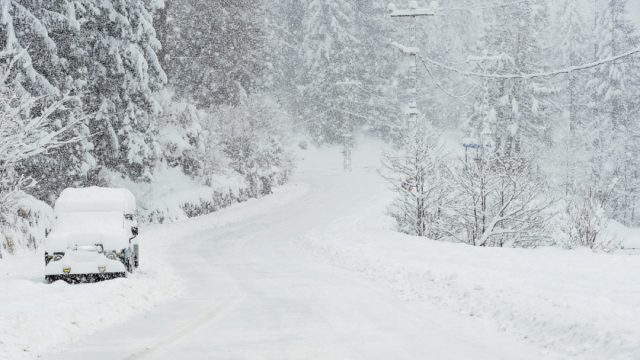Meteorologists Explain the Difference Between Blizzards and Snowstorms

In many parts of the world, snow is a fact of life. For at least three—really five—months of the year, it’s a constant presence. But when the weatherman calls for a whiteout, how do you know if it’s a blizzard or a snowstorm? Although these terms seem interchangeable, they actually are two different weather conditions. As James Bria, certified consulting meteorologist, senior forensic weather expert, and forecast operations manager at CompuWeather, Inc., explains, the difference between a blizzard and a snowstorm lies in total snowfall, wind strength, and how long the inclement weather lasts.
It turns out a snowstorm doesn’t necessarily mean that a true storm is occurring, per se—just the act of snow falling means you’re experiencing a snowstorm. “A snowstorm is technically defined as any time that winter weather occurs, but many people will associate the term with it being a big storm,” Bria says.
As for blizzards, our definition is also often wrong. “It is possible to have blizzard conditions even when there isn’t snow falling,” Bria says. He explains that in order for a blizzard to occur, a weather reporting station has to experience three consecutive hours of both sustained winds or frequent gusts 35 miles per hour or higher, as well as considerable falling or blowing snow that reduces visibility to less than one-fourth of a mile. According to Bria, a snow-less blizzard “tends to happen more often in wide-open, flat landscapes with little vegetation, like the Great Plains.”
And even when blizzard conditions are met and it is snowing, it can be hard to see those flakes falling. “With winds as strong as 35 mph, it is almost impossible to determine if snow is actually falling, or just being blown around by the wind,” says Jim Block, chief meteorological officer at DTN. “In a blizzard, you can’t tell, and it doesn’t matter.”
So, the next time the winter weather rears its ugly head, you’ll know what type of conditions you’re really seeing!